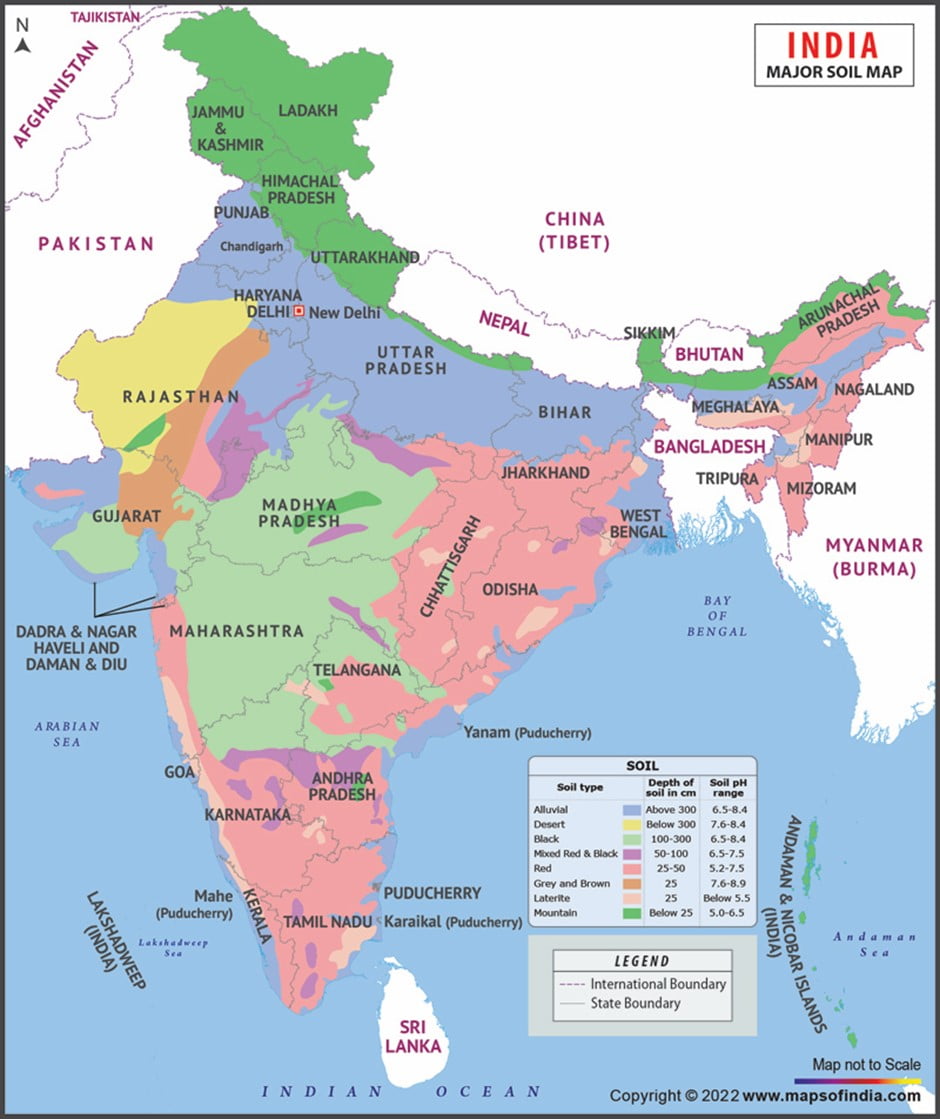Environment & Ecology, Geography
In News: Food and Agriculture Organization (FAO) report on Global status of black soils is the first such report, released on World Soil Day.
- Black soils feed the global population and are under threat due to losing at least half of their soil organic carbon (SOC) stocks.
- Preserving natural vegetation on black soils such as grasslands, forests and wetlands and adopting sustainable soil management approaches on cropped black soils were the two main goals highlighted by the report.
Black soil:
- The inherent fertility of the soils makes them the food basket for many countries and are considered essential to the global food supply.
- These soils are characterised by a thick, dark-coloured soil horizon rich in organic matter.
- Black soils are extremely fertile and can produce high agricultural yields thanks to their elevated moisture storage capacity.
- Europe and Eurasia accounted for 70 per cent of the soil in the total cropland, while North America, Latin America and the Caribbean and Asia had 10 per cent each.

Features of Black soil:
- Clayey in texture
- Highly fertile
- High moisture retention
- Rich in calcium carbonate, magnesium, potash and lime
- Poor in nitrogen and phosphorous
- Contractable, develops deep wide cracks on drying
Significance:
- They constitute 5.6 per cent of global soils and contain 8.2 per cent of the world’s SOC stocks i.e. approx. 56 billion tonnes of carbon.
- Globally in 2010, 66 per cent of sunflower seeds, 51 per cent of small millet, 42 per cent of sugar beet, 30 per cent of wheat and 26 per cent of potatoes were harvested from black soils.
- The ability of the soils to remove carbon from the atmosphere and lock it up in soil organic matter (called carbon sequestration) has been proposed as an important solution to mitigate human-induced climate change.
- Black soils have the potential to provide 10 per cent of the total SOC sequestration globally if they receive proper attention.
- Europe and Eurasia have the highest potential at over 65 per cent and Latin America and the Caribbean at around 10 per cent, according to FAO’s global Soil Organic Carbon Sequestration Potential map.
- Black soils were home to 2.86 per cent of the global population and had 17.36 percent of cropland, 8.05 per cent of global SOC stock and 30.06 per cent SOC stock of global cropland
Threats:
- Most of the black soils suffered from moderate to severe erosion processes, as well as nutrient imbalances, acidification and biodiversity loss
- Black soils have lost 20 to 50 per cent of their original SOC stock, with the carbon being released into the atmosphere mostly as carbon dioxide, exacerbating global warming
- Land-use change, unsustainable management practices and excessive use of agrochemicals are to blame
Source: DTE
Previous Year Question
Q1) Which of the following statements regarding laterite soils of India are correct? (2013)
- They are generally red in colour
- They are rich in nitrogen and potash.
- They are well-developed in Rajasthan and UP.
- Tapioca and cashew nuts grow well on these soils
Select the correct answer using the codes given below.
-
- 1, 2 and 3
- 2, 3 and 4
- 1 and 4
- 2 and 3 only














